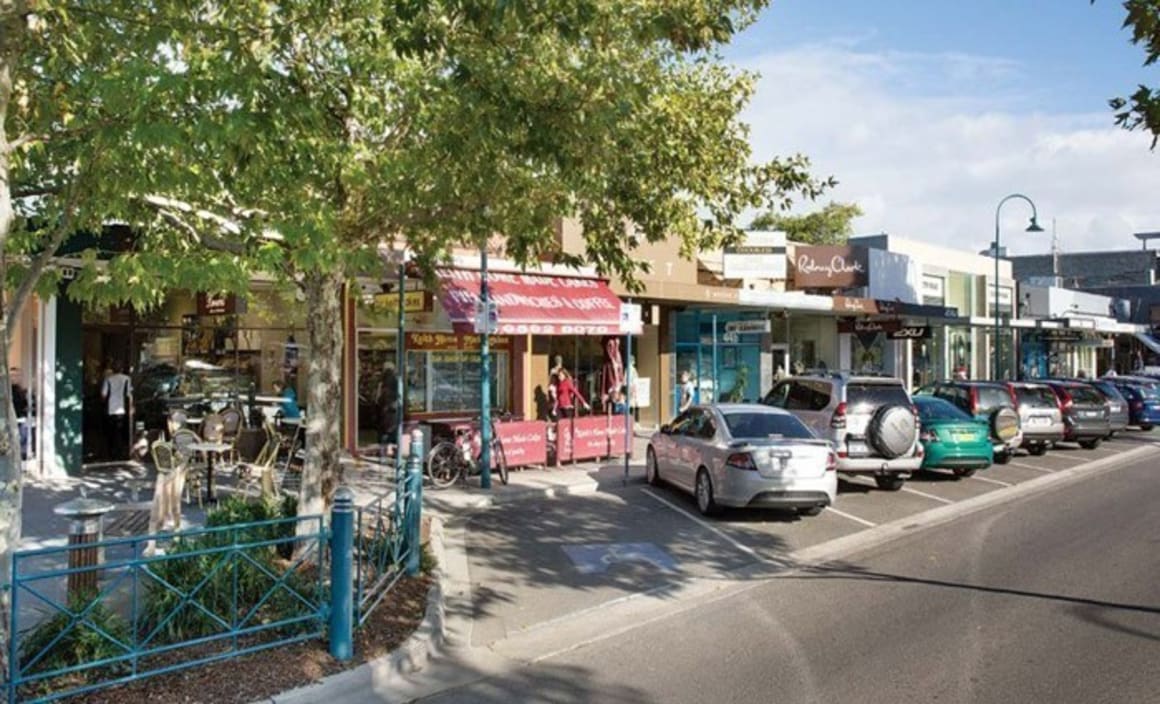Food services to drive recovery in Melbourne's strip vacancies: Savills

Total vacancy across Melbourne’s ten key retail strips has risen to 9.2 percent from 7 percent over the 12 months to April due to falling consumer confidence and growth of online retail, but the food sector is expected to drive a recovery, according to the latest research from Savills.
The research found Church Street, Brighton (pictured above) recorded the lowest vacancy of 4.1 percent, followed by Glenferrie Road, hawthorn with 5.3 percent (2.1 percent in 2016) and Centre Road Bentleigh not far behind at 5.5 percent (5.1 percent).
Predictably, Bridge Road, Richmond recorded a 15 percent vacancy, up from 13.6 percent. This included the withdrawal of 42 stores for residential conversion. Puckle Street and Toorak Road, in both South Yarra and Toorak, also recorded substantial vacancy rises.
Savills associate director-Research, Monica Mondkar, said the strips had largely been impacted by falling consumer confidence and growing online sales, which had particularly impacted the fashion industry, but a surge in the number of café/food & groceries stores was expected to drive a vacancy recovery.

“These figures are hardly surprising given the well-publicised woes of smaller retailers and recent figures which point to consumers holding tighter their purse strings as they battle mortgage and rental stress,” said Mondkar.
“While food and café and restaurant sectors have seen substantial growth, it is the fashion industry, along with a decline in household goods stores, that has been the key to the rise in vacancy.
“That said, we expect vacancy to steadily recover as the number of cafes, grocery stores and services continue to grow in line with the surge in Melbourne’s inner city population, filling vacancies left by fashion and household goods stores.’’
Australian retail trade grew just 3.14 percent in the 12 months to March, the lowest since March 2012 when it was 2.55 percent, ABS data showed. Similarly, Victorian retail trade growth in the 12 months to March (3.57 percent) was the lowest since March 2014 (3.46 percent).
At the same time, online retailing grew by 9 percent year on year to March with Australians spending $22.23 billion on online shopping, equivalent to 7.3 percent of spending at traditional bricks-and-mortar retailers as measured by the ABS in the 12 months to February 2017.
Viewed over the longer term – 2012 to 2017 - the research found of the 2,618 shops surveyed, the Cafes, Restaurants & Takeaway Food Services category had seen the largest increase of 16 percent from 484 shops to 581 shops, and Services was up 12 percent - 545 to 609 shops.
Clothing, Footwear & Accessories saw a massive 27 percent or 213 store decrease to 568 stores. Household goods also fell a notable 24 percent.
The decline in fashion retailing is a suburban phenomenon, said Mondkar, with Savills retail data showing a 17 percent rise in the number of CBD fashion stores at the time of a 27 percent decline over suburban strips. The CBD gain could be explained by the influx of international brands over recent years especially at the new and refurbished shopping centres, Emporium and St Collins Lane.
“The figures appear absurd on face value but we have seen a massive arrival of foreign fashion houses to Melbourne’s CBD over the last three to four years and the arrival of one has attracted others like bees to a honey pot. Melbourne, Australia’s fashion capital is also a market which has been underpinned in recent years by a rise in tourism led shopping and the significant rise in the CBD population,’’ Mondkar said.
She said the reason for the fall in the number of household goods stores on suburban strips anecdotally reflected a preference for shopping at larger centres where parking and the number of stores provided accessibility, convenience and choice.
Notable leases among the most popular fashion strips included Australian fashion designer Anna Hoffman, bridal jewellery designer Stephanie Brown and national fashion retailer Scanlan Theodore were the latest entrants, opening up new stores along High Street Armadale where Clothing, Footwear & Personal Accessory retailing accounts for 32 percent of stores.


Church Street Brighton and Burke Road Camberwell, the two other high performing fashion strips, recorded fashion at 28 percent and 27 percent respectively, while national retailers Wittner Shoes, Gorman and Nique opened up stores on Church Street Brighton and Zeira shoes and CUE leased new shops along Burke Road Camberwell.
Low yields around 3.5 to 4.5 percent more common
Yields and rents varied widely according to the particular attributes of the strip, Mondkar said.
“Strip retail, especially suburban strip retail has long been a favourite of the small investor and in recent years that focus has intensified with the emergence of the SMSF and of course record low interest rates,” she said.
“Yields have always been tight in these markets but those factors have seen even further downward pressure to the point where yields around 3.5 to 4.5 percent are now much more common,” Mondkar said.
“Rents can vary dramatically between precincts and indeed, in some cases, within precincts. They are very much about the location, the position within the location and current vacancy levels.”
She said rents for strip shops in the best strip locations generally ranged between $800 and $1,200 a square metre.

